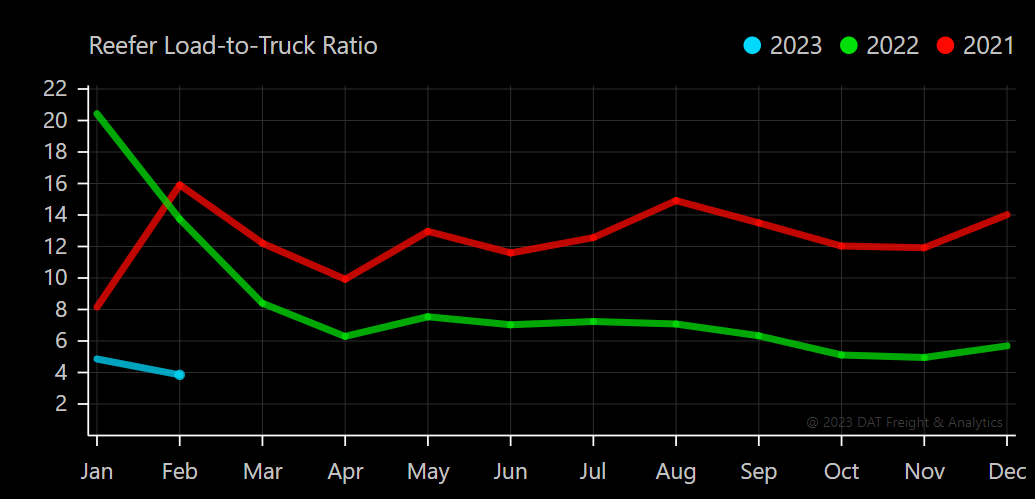Produce Season's Impact on Reefer Capacity
How does produce season impact Refrigerated Spot Truckload Capacity?

The refrigerated trucking industry (Reefer TL) is a vital component of the supply chain, as Reefer TL provides the truckload capacity responsible for transporting perishable goods from one place to another in a timely and efficient manner. However, the pricing of refrigerated spot truckload services can be impacted by a variety of factors, one of the most significant being produce demand.
Produce demand refers to the level of demand for fresh fruits and vegetables, which are typically transported using refrigerated spot truckload services. When the demand for produce is high, the price of refrigerated spot truckload services tends to increase, as carriers and brokers compete for limited capacity. This phenomenon is particularly pronounced during peak produce seasons, such as the summer months when farmers harvest crops such as berries, melons, and stone fruits.
During these periods, the demand for refrigerated spot truckload services can skyrocket, leading to a surge in prices. Conversely, when the demand for produce is low, such as during the winter months, the price of refrigerated spot truckload services tends to decrease. This is because there is typically more capacity available, as carriers and brokers compete for a smaller pool of available shipments.
However, it is important to note that produce demand is not the only factor that impacts the pricing of refrigerated spot truckload services. Other factors, such as fuel costs, holidays, driver shortages, and weather conditions, can also play a significant role in determining prices. Furthermore, the pricing of refrigerated spot truckload services can vary widely depending on the specific market and region. For example, prices may be higher in markets with a high concentration of produce growers, or in regions with limited trucking capacity.
In conclusion, produce demand is a key driver of pricing in the refrigerated spot truckload market. When demand is high, prices tend to increase, while lower demand can lead to lower prices. Other factors such as fuel costs, driver shortages, and regional market conditions can also impact pricing, making the truckload spot market complex and challenging to navigate. This is why it is highly recommended to partner with TLI to launch a Truckload RFP for you.
TLI Insights
Get the latest logistics insights and tips from TLI's award-winning team. Stay ahead in transportation planning.
Questions? Email us at marketing@shiptli.com





